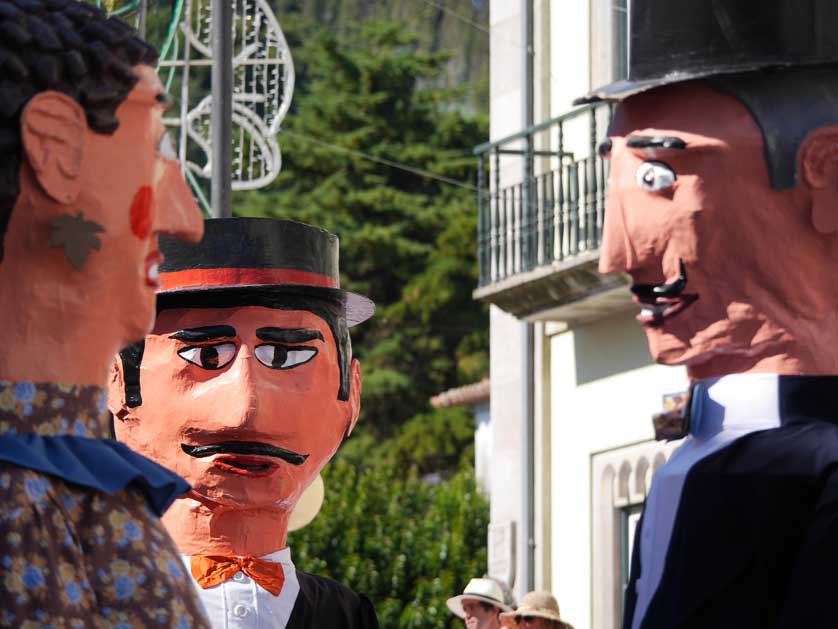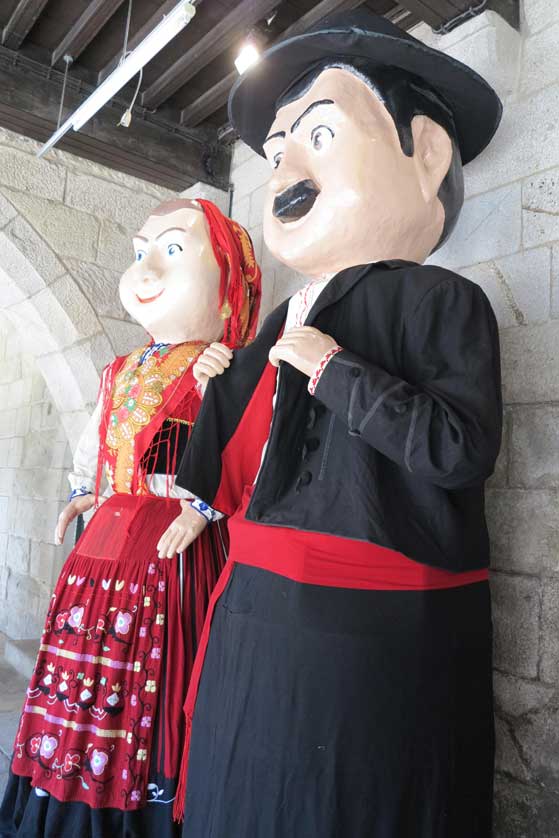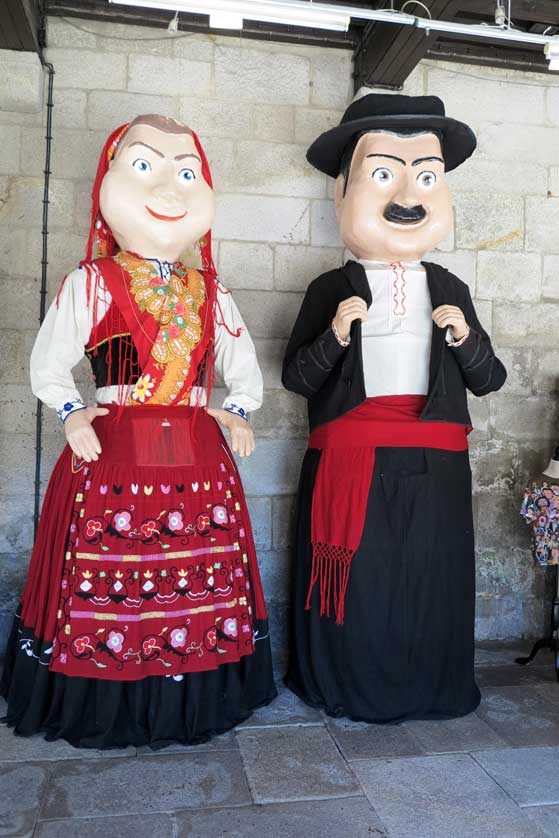Gigantones - Processional Giants
Gigantones are human dolls measuring upto 3.5 to 4 meters in height, typical of Portuguese festivals, pilgrimages and carnival processions.
The doll has a structure that allows it to be "dressed" and handled by a person inside. The large head, made of paper pulp, and the rest of the structure can weigh around thirty kilos, a weight supported by the handler's shoulders which makes the doll's range of movement limited.
Festivals
In general, gigantones do not appear alone, but in pairs or groups of couples, wearing formal or traditional costumes. They parade to the rhythm of music.
They may be accompanied by cabeçudos, smaller dolls (the size of a person) with a huge head, disproportionate to the body. The head, also made of paper pulp, is used as a kind of helmet, and the clothes are more informal and colorful than those of the giants.
With greater freedom of movement than the gigantones, cabeçudos can dance and move more freely. The carnival in Torres Vedras is famous for its cabeçudos.
The first historical reference to gigantones and cabeçudos is the Corpus Christi festival in Évora in 1265. They included a snake, demon and dragon which represented the challenges that Jesus Christ had to defeat.
Pictured are gigantones from Viana do Castelo on the northern Atlantic coast of Portugal.
Hotels in Northern Portugal
Portugal offers a range of accommodation options from five-star, luxury hotels and spa resorts to more homely and economical residencial and guesthouses. See some recommendations of places to stay below.
© Portugal Visitor









No comments:
Post a Comment